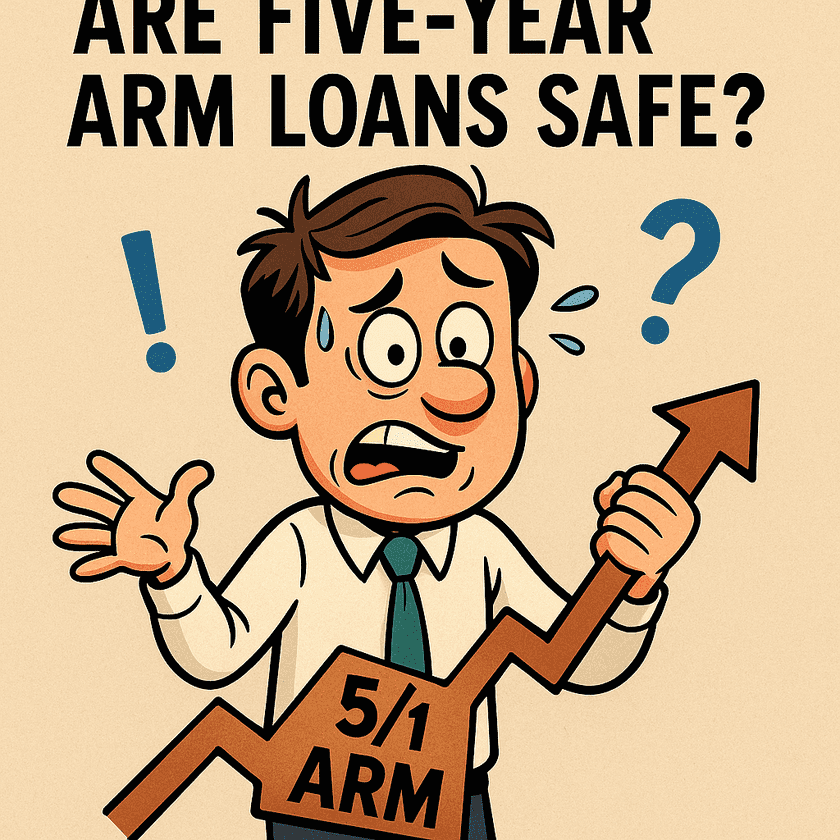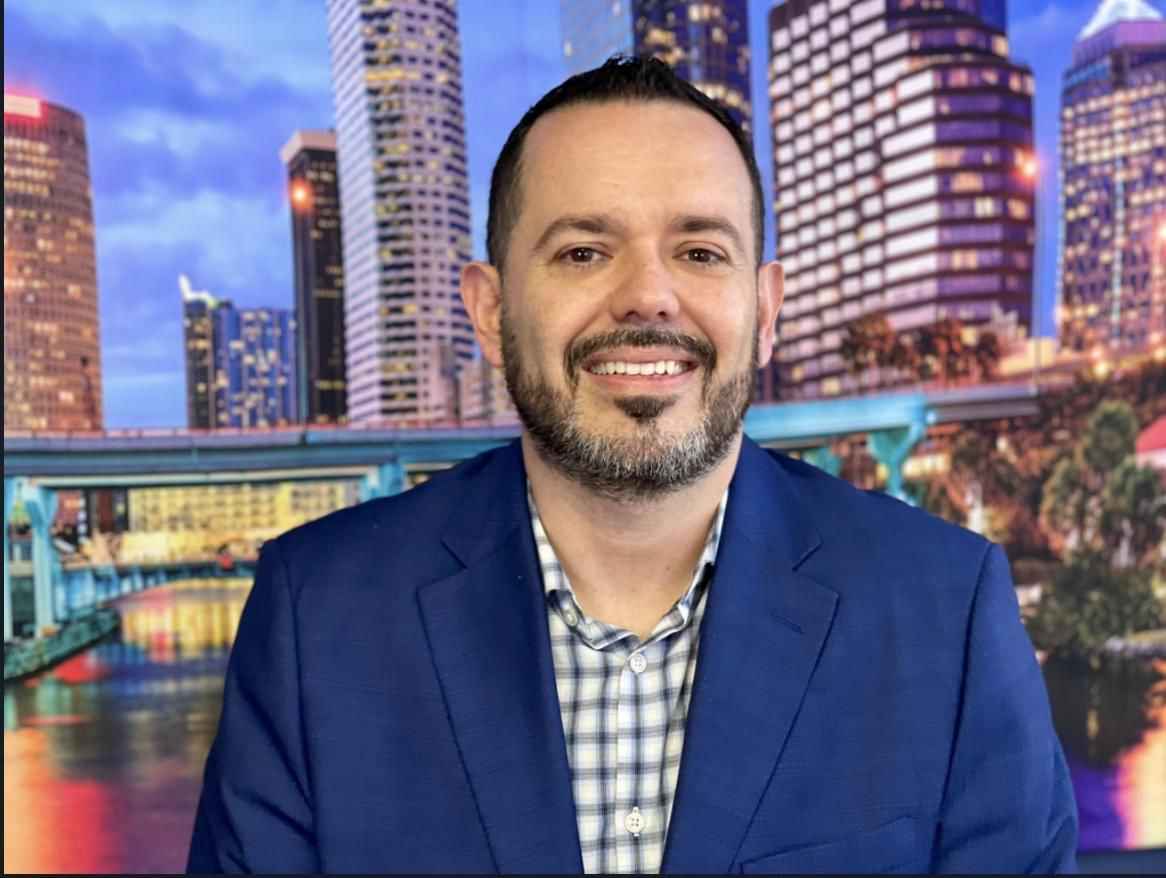
Are Five-Year ARM Loans Safe in 2025?
By Jorge Vazquez, CEO of Graystone Investment Group
Let’s be real—how many people actually keep their mortgage for 30 years?
Not many.
In fact, most of us don’t even make it to year five before refinancing, selling, or restructuring. Life changes. Rates change. Strategies change. And right now in 2025, with interest rates still high and whispers of major drops in 2026, the old-school 30-year fixed loan is looking… kinda overkill.
That’s where ARM mortgages come in—specifically the 5-year ARM.
Now before your brain screams “Wait! Isn’t that risky?”—hang on. Let’s break it down the way I’d explain it to a new investor, a smart buyer, or my little cousin trying to buy her first place. You’ll walk away knowing exactly what an ARM is, how it works, when it makes sense, and whether 5-year ARMs are actually safe in today’s market.
What Is an ARM Mortgage?
ARM stands for Adjustable-Rate Mortgage. That means your interest rate isn’t fixed forever. Instead, it stays fixed for a set period—then it starts adjusting based on market conditions.
The most popular version? The 5/1 ARM. That means:
-
Your rate is fixed for the first 5 years
-
Then it adjusts once per year based on whatever index it’s tied to (usually the SOFR or Treasury rate)
So you get the comfort of stability for five years… and after that, yes, it can go up. But also—surprise—it can go down, too.
Why the 5-Year ARM Is Getting Hot in 2025
Let’s talk numbers.
Right now:
-
30-Year Fixed: ~6.75%
-
5-Year ARM: ~6.00–6.25%
That’s a 0.5–0.75% discount. On a $350,000 loan, that can save you $150–$200/month, easy.
Over five years, that’s nearly $10,000+ in savings. That’s roof repairs, new appliances, or your next down payment.
And if rates drop in 2026 like many expect (Fed pivots, inflation cools, election-year stimulus, etc.)—guess what?
You refinance.
Before the ARM even adjusts.
When an ARM Makes Sense
If you’re doing any of these, a 5-year ARM is your friend:
-
Flipping a house: You’ll be out before the rate adjusts.
-
BRRRR strategy: You plan to refinance into a 30-year fixed once the property is stabilized.
-
Starter home: Planning to upgrade in 2–4 years? Why overpay now?
-
DSCR or investor loans: Use the ARM to get better cash flow while you wait for refi season.
But What If the Rate Adjusts Up?
Great question—and it’s why people get nervous. But remember:
-
ARM mortgages come with caps. For example:
-
Initial adjustment cap: 2%
-
Annual adjustment cap: 2%
-
Lifetime cap: 5%
-
So if you start at 6%, the worst case is it goes to 8% in year six and caps out at 11%.
But if you’re not planning to hold that long, it doesn’t matter. You’ll refinance before then, especially if rates drop to 5% or lower in 2026–2027 like many analysts predict.
Real Talk: Why Most People Don’t Keep a Mortgage 30 Years
-
People move.
-
People refinance.
-
People restructure their portfolio.
I’ve been doing this 20+ years. Very few clients ride out a full 30-year mortgage.
In fact, according to Freddie Mac, the average loan lifespan is just 6–8 years, and that includes folks who weren’t even planning on moving.
So if we know most people won’t keep a mortgage for 30 years, why not pick a loan that’s cheaper up front?
Case Study: Luis the BRRRR Investor
Luis bought a duplex in Tampa using a 5-year ARM at 6.1%. His mortgage payment was $240 less than if he’d used a 30-year fixed. His plan?
-
Rehab in 6 months
-
Re-rent at market rate
-
Refinance in year 2 (hopefully into a 5.0% fixed if rates drop in 2026)
-
Pull out equity and buy the next deal
Luis is playing chess, not checkers.
If rates don’t drop? He still has 3 more years at that low ARM rate before anything changes. Plenty of time to pivot.
My 2007 Lesson: Be Surgical, Not Reckless
Let me bring you into my world for a second.
Back in 2007, I lost properties. Not because I didn’t work hard. Not because I didn’t care. I lost them because I was in loans that weren’t fixed long-term—and I wasn’t paying attention to the timing.
Most of the people who got in trouble back then were in variable-rate loans from day one—with negative amortization. They were upside-down before they even started. That’s a whole different situation from what we’re seeing today.
That’s why when I talk about 5-year ARMs now, I say this with caution:
You can absolutely do this—but you have to be surgical.
Read this article as a green light, but also as a strategy map:
-
Do your research.
-
Know your timeline. Know exactly when you plan to refinance—don’t wing it.
-
Stack cash on the side. If property values drop unexpectedly, you’ll be ready.
-
Be proactive. Any extra income? Throw it at the principal.
-
And when rates drop by 2% or more? Refinance immediately. Don’t wait.
This is probably one of the only times I’d say an ARM actually makes sense. Rates are at or near the top. The setup is there. You just have to execute it like a surgeon—not a gambler.
This market rewards smart investors, not lucky ones. I learned that the hard way, and I’ve made sure every deal since then reflects that hard-earned wisdom.
What About Prepayment Penalties?
Here’s a question I get a lot: Do ARM loans come with prepayment penalties?
The short answer? Sometimes—but not always.
For most conventional 5-year ARMs, there’s no prepayment penalty, especially on owner-occupied homes. But if you’re using a DSCR loan or a non-QM investor product, read the fine print. Many of those come with a 1–3 year penalty, often around 1% of the loan balance.
If you’re planning to refinance as soon as rates drop (which many investors are), you need to be aware of any penalty that might block that move.
Spotlight: The 5/6 ARM Pro
Here’s one of the newer products making waves:
The 5/6 ARM Pro was built with flexibility and timing in mind. It’s an ideal solution for investors planning to refinance, sell, or reposition within the next few years—especially those anticipating lower rates in the near future.
Here’s what’s new with the 5/6 ARM Pro:
✅ New prepay option — no prepayment penalty after three years
✅ Flexibility for investors planning strategic exits
✅ Competitive rates vs. traditional fixed options
If you’re trying to maximize cash flow while buying time before a refi, this is one of the better options I’ve seen on the market.
What to Watch Out For
ARM loans are powerful, but not magic. Here’s what to keep in mind:
-
Know your caps. You don’t want surprises in year 6.
-
Don’t fall asleep. You must track rates and act before your fixed period ends.
-
Have an exit plan. Refinancing, selling, or converting to a rental—have the playbook ready.
Final Thought
This isn’t 2006. We’re not handing out liar loans or chasing 120% LTVs. But ARMs, when used properly, can be a tool to save money, improve cash flow, and set up a bigger move down the road.
So are 5-year ARMs safe in 2025? They can be—but only if you have a plan.
Keep it consistent, stay patient, stay true—if I did it, so can you. This is Jorge Vazquez, CEO of Graystone Investment Group and all our amazing companies, and Coach at Property Profit Academy. Thanks for tuning in—until the next article, take care and keep building!
If you’d like to connect directly with me, feel free to book a time here: https://graystoneig.com/ceo.
Pick your expert. Book your free 15-minute consult now. We are here to help!
Our Top Articles
Are Five-Year ARM Loans Safe in 2025?
Are Five-Year ARM Loans Safe in 2025? By Jorge Vazquez, CEO of Graystone Investment Group Let’s be real—how many [...]
The Best Cash-Flowing Markets Are Not the Best BRRRR Markets
A new investor asked me this online today: “Jorge, what’s the best cash-flowing market for the BRRRR strategy?” I [...]
Why Affordable Properties Are Still the Smartest Way to Build Wealth in 2025
By Jorge Vazquez, CEO of Graystone Investment Group Introduction: Picking Up Where We Left Off So, you [...]
Property Profit Academy:
✔ Learn to buy properties with little to no money down.
✔ Build a $10M portfolio step by step.
✔ Master strategies like BRRRR and house hacking.








